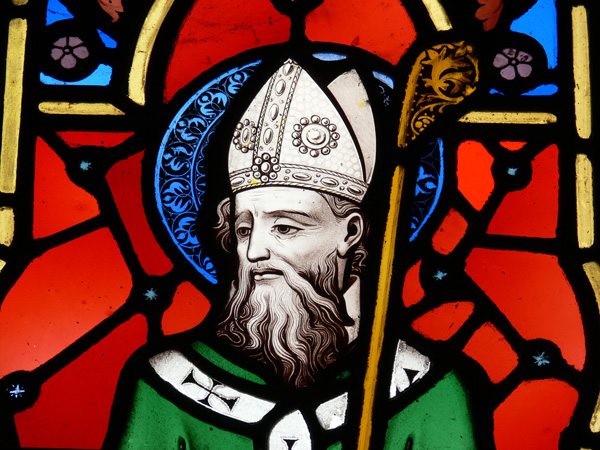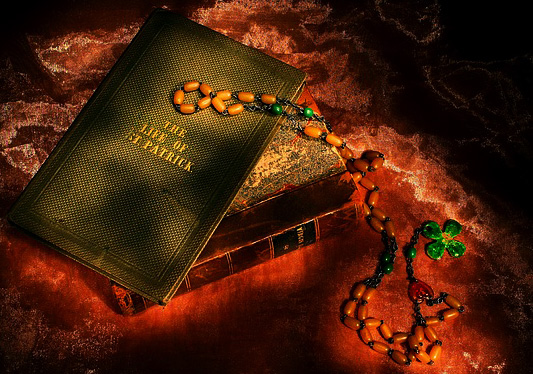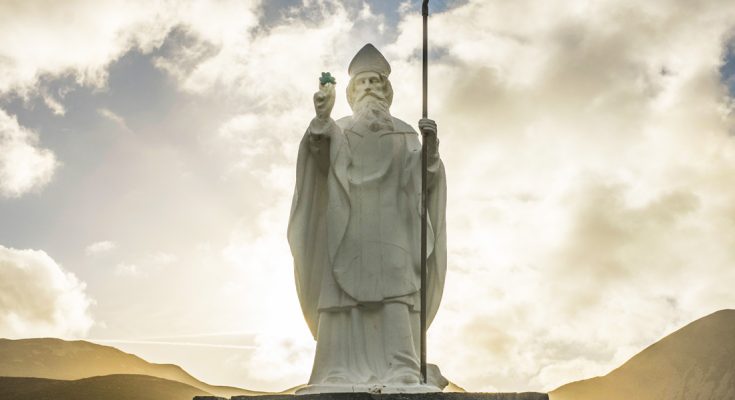Life Lessons from Saint Patrick

Saint Patrick Day Meaning and Symbolism
The Symbolic Story of Saint Patrick
Saint Patrick is approaching his recognized day of celebration soon on March 17th. Although largely recognized in the US, Ireland and surrounding regions, we could easily argue St. Patrick’s day has become observed globally. This begs the question, “Why?” and “Who is this St. Patrick guy?“
Green beer and merrymaking aside, St. Patrick’s day is stuffed with meaning and symbolism that some folks in the pub on St. Paddy’s might not be aware of. For example, St. Patrick wasn’t Irish at all. He was born in Roman Britain on March 17th year 385 AD. So if not born in the Emerald Isle, why is he a patron saint of Ireland? It’s a story that is both ironic and symbolic.
St. Patrick’s epic story begins in history when he was captured by Irish marauders. Apparently, Patrick was struck with dumb luck. He was at the wrong place at the wrong time when Irish raiders went over to Britain snatching up able bodies to use as farmhands. These captives were more like slaves than hired help because they certainly weren’t paid, and these captives certainly weren’t working in a foreign land under their own free will.
At the tender age of 16, Patrick was yanked from his home and subjected to work in slavery as a sheep herder. He endured his fate for six long years, until (as the stories go) he heard a divine voice urging him to flee to the coast where he would find a ship that would lead him to freedom. He heeded this voice, and set sail. Patrick then traveled through France and central Europe where he achieved an education in theology and a deeper knowledge of the Christian religion.
Life seemed pretty keen for Patrick during these years, but that persistent divine voice started stirring within his heart again. This time, the voice of God told Patrick “Go back to the place where you were enslaved and teach the people My ways.”

Patrick’s Secret Sauce – Why He Achieved Sainthood Instead of Slaughter
Can you imagine? Revisiting the people and place where you were held captive, ‘make nice’ and share the message of love, compassion and forgiveness? The prospect takes guts and grit…but Patrick was a fervent servant of God, and believed this was his highest calling as a Godly representative. So, Patrick returned to Ireland as a missionary. He met with Irish chieftains and shared the word and wisdom of God according to the Christian doctrine.
To say St. Patrick’s missionary stint in early Ireland was all sunshine and lollypops would be a grossly errant assumption. In fact, Patrick’s life was threatened often and he found himself in constant hot water from the ancient Irish-Celts. In spite of the dicey circumstances he found himself in, Patrick lived to a ripe old age of 79. This is a testimony to his devotion to his faith, as well as his ability to be an effective (and ultimately highly respected) missionary of God.
What was Patrick’s secret? What made him so masterful at staying alive during hostile times? How was he able to become so adored and even embraced as a patron saint when he wasn’t even born in Ireland? Why wasn’t he pummeled the minute he introduced a one-god religion to people already firmly rooted in a richly diverse pagan belief system? BTW: The word pagan merely means ‘country folk’ (Latin) – These country folk had their own understanding of divine energy and the bond between humanity and Mother Nature which was far flung from the ideas of Christianity.
At any rate, to answer these questions we’ve got to recognize St. Patrick as a sensitive soul who would rather convert country folks using kindness and compassion versus cramming and crushing. While most missionaries in early times utilized brutalizing, dominating tactics to bludgeon pagans into converting to Christianity…savvy Saint Patrick took the time to understand the Irish-Celtic pagan ways first.
By doing so, he was able to thoughtfully weave his message into the strong-held beliefs of the people. Instead of hammering the word of God, he embraced early Irish culture and respected it. There is no account where Patrick demanded the Irish-Celts to deny or rebuke their old gods and replace them with the one God of Christianity. This is likely what saved Patrick’s bacon. He did not coerce, deceive or command. He simply tried to understand and suggest a different way of life.
So what does the story of St. Patrick have to do with symbolism? Well, St. Patrick used many so-called pagan, Celtic symbols to demonstrate the message of Christ…but I’m looking for something more deeper here. I believe we have a lot to learn from the life of Patrick. Here is what I mean:
Lessons from the Life of Saint Patrick
- Freedom in Forgiveness: In spite of being kept as a slave, Patrick returned to Ireland in the spirit of forgiveness and concern for the people who stole six years of his life. In a way, Patrick was able to free himself from the remnants of enslavement by extending freedom and embracing his former captors. This speaks to extraordinary faith, maturity and healing. Too often, many fall to their demise in the midst of grudges or holding onto past pain. This keeps them in mental slavery when they have the option to be free. I think St. Patrick understood this.
- Perspective, Perception and Principle: From the accounts I’ve studied, I believe St. Patrick went to great lengths to understand the Irish pagan-Celtic ways before he started acting as a missionary in their territory. He recognized he was introducing some radical concepts at the time to a people who were profoundly bound to their earth-based beliefs. Instead of converting through conquest and cramming the message of Christ down their throats, Patrick took the time to understand early Irish culture first. This all boils down to the benefits of learning the perspectives of others before shoving our own personal viewpoints in the face of others. Compassion was the key to Patrick’s path as a missionary. He did not force his perspective, but he held to his principles. I think this is why St. Patrick enjoyed a long life, and was ultimately esteemed as a patron saint of Ireland.
- Following the Calling: Whether you call it intuition, instinct or the voice of God…there is something to be said about heeding that ‘still, small voice’ within. Patrick gave up a pretty tidy life to go back to the land that held him as a slave, and he did it all at the behest of a divine calling. That speaks volumes about faith and devotion. I believe if more of us were inspired by true callings, the world would be a better place. What do you think?
Whether you agree with Patrick’s missionary goals or not…you’ve got to give props to the guy for sticking to his scruples and having the chutzpah to follow his beliefs. If nothing else, I hope this history-in-a-nutshell about Saint Patrick offered you value and inspires you to follow your path regardless of potential challenges.
As always, thank you for reading! Oh, and please don’t miss my other offerings below listed, such as the symbols of Saint Patrick, the symbolic meaning of the shamrock (which St. Pat used in his missionary work).
Wishing you all an enlightened and inspired St. Patrick’s day!
Mighty brightly,
Avia

